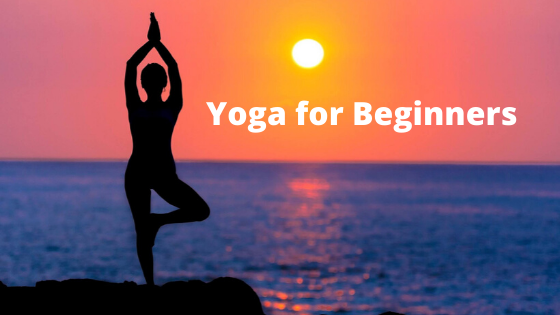Yoga for Beginners: A Comprehensive Guide to Get Started

You’re new in yoga world, and feel intimidating and be challenging to learn properly how and where to get started. Our Yoga for Newcomers guide was created especially for you to give you all the recommendations, guidelines, tips, you will need to begin a successful yoga exercise. We extremely recommend you read this complete page before trying any yoga.
Definition of Yoga:
A combination of Mental, Physical and Spiritual practices or disciplines is recognized YOGA, which is introduced in INDIA. The term yoga tends to means “union” or “to merge”.
History of Yoga:
The foundations of yoga have been established during pre-Vedic Indian; maybe in the Indus valley civilization around 3000 BCE. Yoga originates in India essentially as a philosophy of the universe. In yoga history, the physical side consisted of basically just a few breath control and seated postures to help the practice of deep meditation.
What Happen in Yoga Class?
Today yoga practice comprised of breathing (pranayama), postures (asana), and meditation in differing proportions. Usually, yoga classes are 60-90 minutes long. The yoga class will often start with concentrating everyone’s attention on their breathing, then Deeper backbends and stretching often follow once the body is hot. As a beginner go in with an open mind in class and do as much you able to do.
Yoga Equipment for Beginners:
The most crucial equipment for yoga is the mat. Yoga mat offers you an ideal combination of comfort, alignment assistance, grip, support, sustainability, and ethical business practices. Besides yoga mat, yoga-pant, tanks, top, or inner-wear also play an important role to keep you concentrate on yoga. Stretchy and flexible workout shorts or pants, a somewhat fitted top (too tight irritate you and too loose will be falling in your face), maybe a sports bra.
Advantages of Practicing Yoga:
The advantages of yoga are almost infinite! Daily yoga-practicing helps develop good values and healthy virtues, such as devotion, discipline, mindfulness, honesty, self-inquiry, and non-attachment. Yoga allows you to make intelligent choices toward living a more fulfilling and healthy life. Yoga also helps you:
Get a satisfying night’s sleep and boost your immune system.
Prevent diseases such as heart disease, diabetes, and auto-immune disorders.
Develop and maintain the health of joints, muscles, and organs.
Increase strength, stamina, flexibility, mobility, balance, and range of motion.
Keep your mind strong and healthy.
Overcome stress and improve relaxation.
Help recover general aches like back pain.
Enhance happiness and well being and decrease depression.
Is Yoga Right For You?
Many people feel that they are not young enough, flexible enough, or weak to start yoga. Yoga is beneficial for everyone because it’s an extremely versatile practice. So, yes yoga is everyone who wants’s to live a healthy lifestyle.
Different Types of Yoga:
We’ve mentioned some basic yoga postures but you yet may not know exactly what it means, so here are a few of the poses that you are possible to encounter early in your practice.
Hatha:
Hatha is considered a blanket term when it comes to yoga-it simply refers to connecting poses with breath. Hatha yoga is great for both yogis or beginners who want to develop their practice because keeping the poses for longer helps you fall into each of them and assure proper alignment.
Tadasana or Mountain Pose:
Tadasana is the foundation for all standing poses; it provides you a sense of how to ground into your feet and feel the earth below you. Tadasana may look like simply standing, but there is a tonne going on. It develops balance and directs your awareness to the present moment.
Adho mukha svanasana or Downward Facing Dog:
This pose is used in most yoga classes and yoga practices and it strengthens and stretches the complete body. This famous pose lengthens your spine, stretches your hamstrings, and opens your shoulders. While your head is below your heart, gentle inversion generates a calming effect.
Kumbhakasana or Plank Pose:
Kumbhakasana teaches us how to balance on hands while using the whole body to help us. It is the most effective way to strengthen the abdominals, increase stability and appreciate to use the breath to support us stay in a challenging pose.
Parivrtta trikonasana or Triangle Pose:
Parivrtta trikonasana is an amazing standing posture to open up the lungs, stretch the sides of the waist, strengthen the legs and tone the whole body. As well as it stretches your outer hips and hamstrings. Twisting boosts the overall health of the spine and involves your abdominal obliques to promote the twist.
Vrksasana or Tree Pose:
Vrksasana is an impressive standing balance for beginners to improve the gain clarity and focus and learn to breathe while standing and holding the body balanced on one foot. Tree pose helps develop concentration and your capability to balance by supporting the arches of the feet and the outside hips.
Virabhadrasana I or Warrior I:
Virabhadrasana I poses are necessary for building stamina and strength in yoga practice. They provide us confidence and stretch the thighs and hips while growing strength in the whole lower body and core. Warrior energizing pose strengthens your arms, legs, and back muscles. It also provides your shoulders, neck, chest, thighs, and ankles a gentle stretch.
Virabhadrasana II or Warrior II:
Virabhadrasana II is famous for an opens up the inner thighs and groin and external hip opener. It’s a great starting point for multiple side postures including triangle, half-moon balance, and extended angle. A “Virabhadrasana” standing pose can promote calm and steady your mind. More difficult than it looks, it also strengthens your ankles and legs while improving stamina.
Paschimottanasana or Seated Forward Bend:
Paschimottanasana is the classic best for everyone to start to open up the body and learn to breathe through difficult positions. This feel-good fold stretches the back of your body, stretches your hamstrings, and lengthens your spine. If you face any intense pain, you need to back off; however, if you feel the tension while you fold forward and you can proceed to breathe, you will gradually start to loosen up and let go.
Bottom Line:
As a beginner trying too difficult poses often leads to injury. Staying aware of your physical limitations and when you want to transform a pose will be more useful to your body than reaching to be the strongest or flexible in the class.






